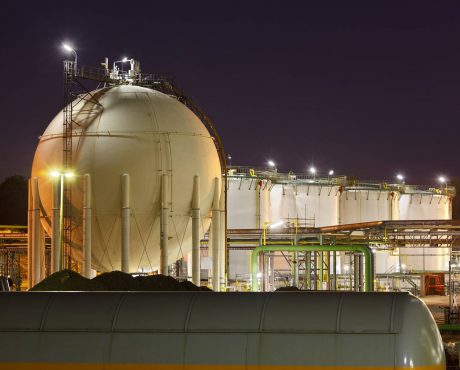This High-Yield Stock Could Be Special
In today’s market, a dividend yield approaching 10% looks far from being the safest bet. And that’s why, even though everyone wants to earn oversized passive income, most risk-averse income investors tend to stay on the sidelines when they see an ultra-high yielder.
But what if a high-yield stock’s management is willing to put their money where their mouth is and load up on the company’s shares?
Well, in an era when talk is cheap, high insider ownership can be interpreted as a more genuine vote of confidence from management.
So, what is this high-yield stock that insiders love?
It’s Energy Transfer LP (NYSE:ET), a master limited partnership headquartered in Dallas.
ET stock has a quarterly distribution rate of $0.305 per unit, which comes out to an annual yield of nine percent at its current unit price.
Some might say a yield nearing 10% is too good to be true. But Energy Transfer’s own management team seems quite confident about the business.
How confident are they?
Well, in November 2019, Energy Transfer’s chief financial officer bought around $201,000 worth of ET stock, the president and chief commercial officer purchased about $290,000 worth of ET stock, and the chief executive officer loaded up a whopping $45.0 million worth of the stock. (Source: “Investor Presentation January 2020,” Energy Transfer LP, last accessed January 16, 2020.)
Mind you, this is not the first time for ET’s management to buy their own company’s stock. For instance, over the past 12 months or so, the CEO has purchased over 13.5 million Energy Transfer units.
Add it up and you’ll see that insiders own 14.4% of the MLP. To put that in perspective, companies in the S&P 500 energy sector have an average insider ownership of just 1.1%.
For investors who are considering this MLP’s oversized cash distributions, substantial insider ownership is certainly a good sign. Of course, in order for any stock’s payout to be considered safe, the math has to check out. So let’s take a look at Energy Transfer’s financials.
Can Energy Transfer LP Afford Its Outsized Distributions?
Energy Transfer last reported earnings in November 2019. The report showed that, in the third quarter, the MLP generated $1.5 billion of distributable cash flow, which represented a 10% increase year-over-year. (Source: “Energy Transfer Reports Solid Third Quarter 2019 Results,” Energy Transfer LP, November 6, 2019.)
For the quarter, the partnership paid $809.0 million in total distributions to its partners. As a result, it achieved a distribution coverage ratio of 1.88 times.
Going further back, things looked equally solid. For the first nine months of 2019, Energy Transfer generated $4.8 billion in distributable cash flow while paying $2.4 billion in actual cash distributions to its partners. That translated to a distribution coverage ratio of 1.98 times, meaning the partnership covered its payout almost twice over.
If you’ve been following MLPs, you’d know that, when it comes to the ultra-high yielding names, coverage like this is considered very, very strong.
Also, while Energy Transfer may not be a familiar name to consumers, it is one of the biggest MLPs on the market, commanding a market capitalization of over $36.5 billion.
The partnership is deeply entrenched in the midstream energy business, with a strategic footprint in all of the major production basins in the United States. Energy Transfer’s core operations include the transportation, storage, and terminaling of crude oil, natural gas, natural gas liquids (NGL), refined products, and liquid natural gas.
The neat thing about this large MLP’s business is that the operations are largely fee-based. For instance, in Energy Transfer’s “Crude Oil” segment, it earns fees from the transportation and terminaling of crude oil. (Source: “Investor Presentation January 2020,” Energy Transfer LP, op. cit.)
In the partnership’s “Interstate Transport & Storage” segment, it generates fees based on reserved capacity, regardless of usage. With the vast majority of ET’s segment margins being fee-based, the partnership can limit its exposure to commodity price volatility.
Going forward, Energy Transfer looks forward to the completion of its project backlog. In particular, the partnership expects its “Lone Star Express” expansion project to be completed in the fourth quarter of 2020. The 24-inch, 352-mile expansion to the Lone Star Express pipeline will add 400,000 barrels per day of capacity from Wink to Fort Worth, Texas.
At the same time, Energy Transfer anticipates the completion of its “Orbit Ethane Export Terminal” in the fourth quarter of 2020. Once finished, the terminal will have an 800,000-barrel refrigerated ethane storage tank, a 175,000-barrel per day ethane refrigeration facility, and a 20-inch pipeline that connects Mont Belvieu to an export terminal.
Obviously, these projects are not cheap, but they will help the partnership grow its business.
Looking back, we see that, from 2015 to 2019, Energy Transfer’s adjusted earnings before interest, tax, depreciation, and amortization (EBITDA) increased at a compound annual growth rate (CAGR) of around 18% (using the midpoint of the 2019 guidance range because full-year results are yet to be released). (Source: “Investor Presentation January 2020,” Energy Transfer LP, op. cit.)
Bottom Line on Energy Transfer LP
Put it together and it’s easy to see why Energy Transfer LP is special. The midstream MLP runs a growing business, offers huge distributions, and has high insider ownership.
For yield-seeking investors, ET stock deserves a serious look.
